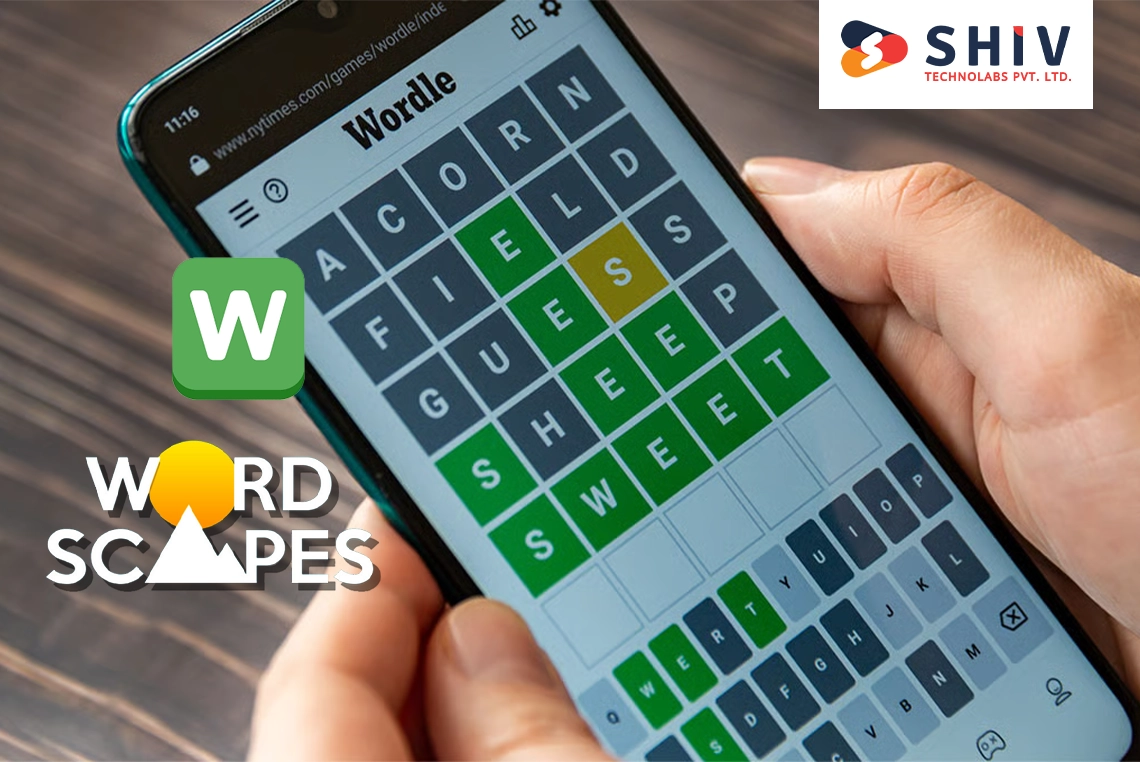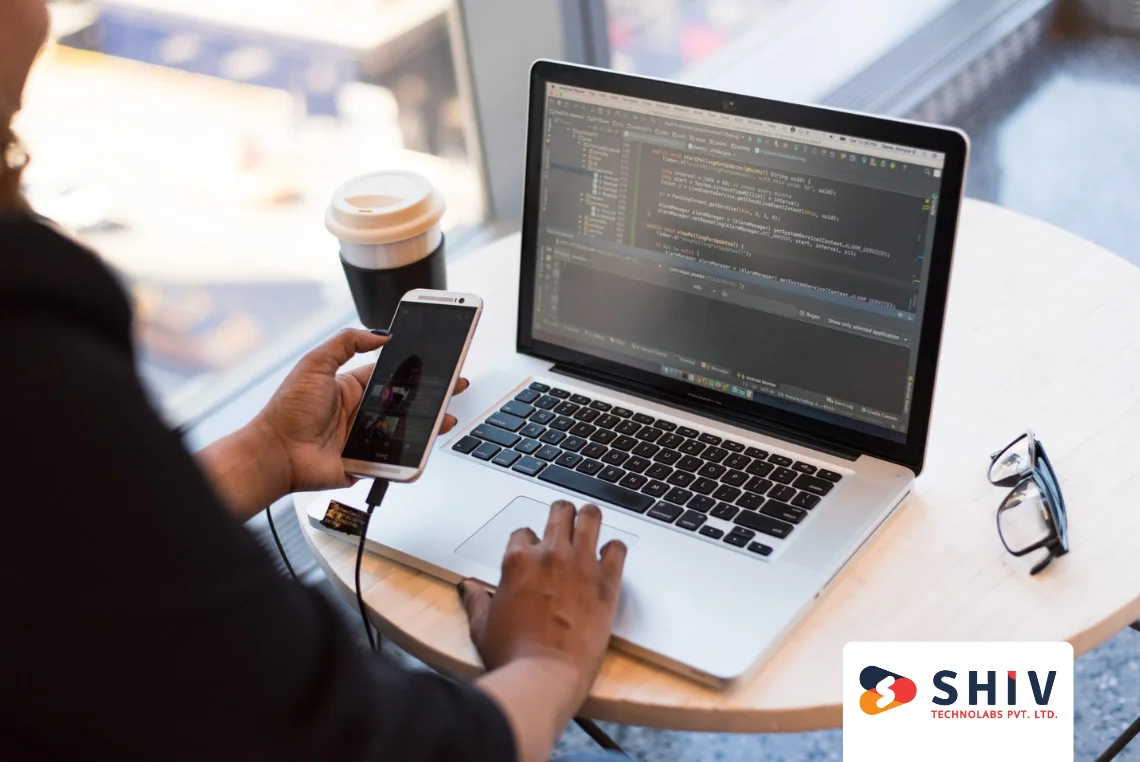Table of Contents
Foldable phones are changing how people interact with mobile apps. These phones introduce flexible screens, multi-window modes, and real-time screen transitions. If your app doesn’t support these features, it can appear broken or outdated.
To stay ahead, businesses must invest in foldable app development. This guide covers everything you need—from process and features to foldable app development cost, tools, and who should build one.
What Is Foldable Phone App Development?
Foldable phone app development is the process of creating mobile applications that adapt to changing screen shapes. These include folded, unfolded, and flexed views.
Unlike standard apps, Android app development for foldable phones involves building adaptive Android apps that work across multiple screen sizes and postures. Developers must design layouts that respond instantly when a user folds or unfolds the device.
Whether you’re creating an eCommerce platform or a productivity tool, building a dual-screen app design ensures your app remains stable and user-friendly across modern Android devices.
Why You Can’t Ignore Foldable App Compatibility?

Many existing apps fail on foldable devices because they weren’t built with dynamic screen behavior in mind. This results in misaligned UI, slow transitions, or complete app restarts.
Creating a foldable Android app helps solve these issues. You can deliver a better experience through split-screen app support and layout adjustments that feel natural on larger displays.
A foldable-ready app lets users:
- Watch videos while chatting
- Compare products side-by-side
- Use drag-and-drop in real time
- Switch between folded and unfolded modes without losing content
Focusing on foldable user experience makes your app more useful on devices like Samsung Z Fold, Pixel Fold, and Oppo Find N.
Must-Have Features in Foldable Phone Apps
To deliver a consistent user experience, your foldable phone UI must support key features:
# App Continuity
The app must not restart or reset when moving between folded and unfolded states. This helps maintain a stable foldable phone UI.
# Multi-Window Support
Multi-window mode allows users to open your app alongside others. Your app must respond well in this view without crashing or freezing.
# Flex Mode UI
Many foldables support Flex Mode. For example, in a foldable eCommerce app, users can browse products on one half of the screen and view details or reviews on the other.
# Adaptive Layouts
Use Jetpack WindowManager to adapt content in real time. Responsive layouts are critical for foldable app development services to work across different screen postures.
# Drag-and-Drop
This feature works well in dual-screen productivity apps and file managers, where users shift content between panels.
Step-by-Step: How to Build a Foldable Android App
Building a foldable Android app requires careful planning, flexible UI design, and support for screen posture changes. Here’s a clear process to get started.
# Step 1: Study Foldable Device Behavior
We research how different foldables behave. This helps us design Android apps for foldable devices that feel native to each screen type.
# Step 2: Plan Adaptive Layouts
We build wireframes focused on dual-screen app design, including layouts for split view, full-screen, and tabletop modes.
# Step 3: Develop with Android Studio + Jetpack
Our developers use Jetpack WindowManager to detect folds and screen posture. It helps build an adaptive android app that adjusts instantly.
# Step 4: Add Split View and Flex Mode
We test split screen app support and add Flex Mode logic, especially useful for streaming, shopping, and video apps.
# Step 5: Run QA Tests on Real Devices
We check app behavior on Galaxy Z Fold, Pixel Fold, and Huawei Mate X using both emulators and real devices.
# Step 6: Publish and Track with Firebase
After launching, we monitor app performance on foldables using Google Play Console and Firebase Analytics.
Best Use Cases for Foldable Phone Apps

Foldable phone app development is especially valuable in areas where screen flexibility and multitasking improve user experience.
Here are the top use cases:
- eCommerce Apps: Foldable eCommerce apps allow customers to browse product listings on one side while viewing detailed images, specifications, or reviews on the other. This layout simplifies product comparison and improves decision-making.
- Streaming Platforms: Foldable Android apps with Flex Mode enable video playback on the top half and playback controls on the lower half. It offers a cleaner and more interactive media experience.
- Productivity Tools: Dual-screen productivity apps let users write, edit, or manage files while referencing another screen. Foldables make multitasking smooth and reduce app switching.
- Navigation and Map Apps: Foldable devices support wider map views with room for directions, landmarks, and traffic updates. It enhances the navigation experience on large screens.
- File Management Apps: Apps with drag-and-drop support across screens are ideal for managing files, folders, or notes. Foldables help users transfer content visually without multiple steps.
Each of these use cases highlights how foldable Android app development improves app functionality and user engagement on next-generation Android devices.
How AI Supports Foldable Phone App Development
Artificial intelligence adds smart functionality to foldable phone apps by making them more responsive and context-aware.
In foldable eCommerce apps, AI adjusts product views based on screen posture or user behavior. For productivity tools, it predicts actions like file access or screen transitions, improving workflow across dual screens.
AI also enhances drag-and-drop support by recognizing common patterns and suggesting quick actions. This creates a smoother experience for Android apps on foldable devices.
Integrating AI in foldable app development helps deliver faster, smarter, and more user-focused mobile experiences.
Foldable App Development Cost – What to Expect
When building Android apps for foldable devices, the cost depends on the screen behavior, app logic, user flow, and testing depth. Below are detailed cost breakdowns to help you estimate your budget accurately.
# Feature-Wise Pricing
Each core feature of foldable phone app development adds specific functionality and cost. Here’s a breakdown of commonly required components:
| Feature/Functionality | Estimated Cost (USD) |
|---|---|
| Adaptive UI for foldable screens | $2,000 – $4,000 |
| Split-screen view compatibility | $1,000 – $2,000 |
| Flex Mode layout and controls | $1,500 – $2,500 |
| Drag-and-drop interaction logic | $1,000 – $2,000 |
| App continuity across transitions | $1,000 – $1,800 |
These features are foundational for delivering a smooth foldable user experience across modern Android devices.
# Budget Estimates Based on App Type and Complexity
Different apps require different levels of logic and testing. Here’s how foldable app development cost varies by use case and scope:
| App Complexity Level | Typical Use Case | Estimated Cost (USD) |
|---|---|---|
| Basic | Simple single-screen content apps | $10,000 – $14,000 |
| Mid-Level | Foldable eCommerce apps | $14,000 – $20,000 |
| Advanced | Dual-screen productivity apps with AI | $20,000 – $30,000 |
Apps with AI integration, complex user flows, or multi-tasking support tend to fall under the advanced category.
# Testing Costs Across Foldable Devices and Postures
Thorough testing is critical in foldable Android app development. Here’s a breakdown based on the testing environment:
| Testing Approach | Coverage Scope | Estimated Cost (USD) |
|---|---|---|
| Emulator Testing Only | Galaxy Z Fold, Pixel Fold presets | $500 – $1,000 |
| Basic Device Testing | 1–2 foldable Android devices (real-world QA) | $1,000 – $2,000 |
| Full Foldable Device Coverage | 3+ devices, real posture simulation | $2,000 – $3,000 |
Testing ensures app continuity, correct layout shifts, and compatibility across screen shapes and hinge angles.
Building a foldable Android app typically costs between $14,000 and $30,000, depending on app complexity, screen behavior logic, and device testing.
Apps with adaptive layouts, split-screen support, and drag-and-drop features fall on the mid-to-higher end of this range. Planning these elements early helps manage both budget and delivery timelines.
More advanced foldable Android app development, such as AR, camera control, or offline syncing, may cost more.
Why Choose Shiv Technolabs for Foldable App Development
Shiv Technolabs has a strong Android team that understands the future of mobile interaction. From planning foldable-specific layouts to fixing posture-related bugs, we build apps that work across:
- Galaxy Z Fold, Z Flip
- Pixel Fold
- Oppo Find N
- Huawei Mate X
You’ll get end-to-end support for designing, developing, and testing apps ready for dual-screen and foldable experiences.
Final Thoughts
Foldable devices are not just a trend—they’re here to stay. If your Android app doesn’t support folding behavior, you risk losing users and falling behind.
Shiv Technolabs offers full-service foldable app development, covering everything from UI/UX design and coding to device testing and Google Play launch. We help businesses build apps that are ready for dual-screen, flex-mode, and split-view usage.
If you’re planning to build or update your app, it’s time to make it foldable-ready. Contact Shiv Technolabs today!





















